It’s almost impossible to picture a world where giant saber-toothed cats once prowled the earth. But that world was real, and in a stroke of paleontological luck, scientists have uncovered the most complete saber-tooth skeleton ever found. Imagine holding bones in your hands that once belonged to a predator so fierce, so awe-inspiring, it dominated its landscape thousands of years ago. This isn’t just a story about bones—it’s about unraveling the secrets of a lost feline legend. From the subtle curve of its skull to the powerful sweep of its ribs, each piece tells a story that’s both deeply mysterious and oddly familiar. For cat lovers, fossil fans, and anyone who’s ever wondered what it’s like to stare into the eyes of prehistory, this tale is for you.
A Face Like No Other
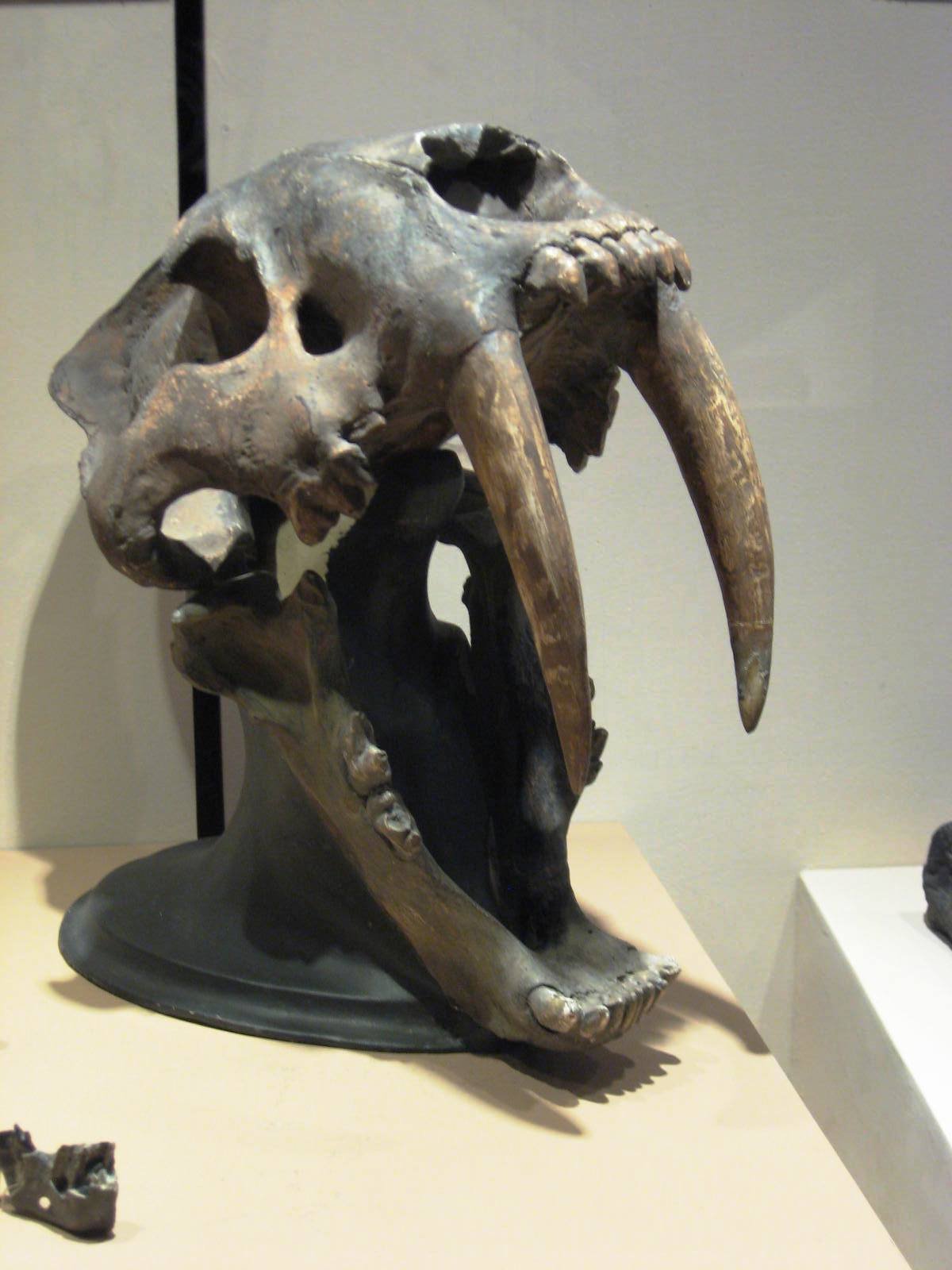
The saber-tooth’s skull is a marvel—broad, powerful, and crowned with those unmistakable canine teeth. These teeth, some longer than a grown man’s hand, curve with a silent menace that hints at the power they once wielded. And yet, look closer, and there’s something strangely gentle about the shape of its face. The eye sockets are wide and expressive, almost soulful, as if this ancient cat saw the world with a depth we can only imagine. The sheer size and shape of the skull hint at a creature built for mastery, but also for keen awareness. Holding the skull, you can’t help but feel a connection, like staring into a mirror from another age—a reflection of the feline grace we cherish in our own modern companions.
Teeth That Tell a Story
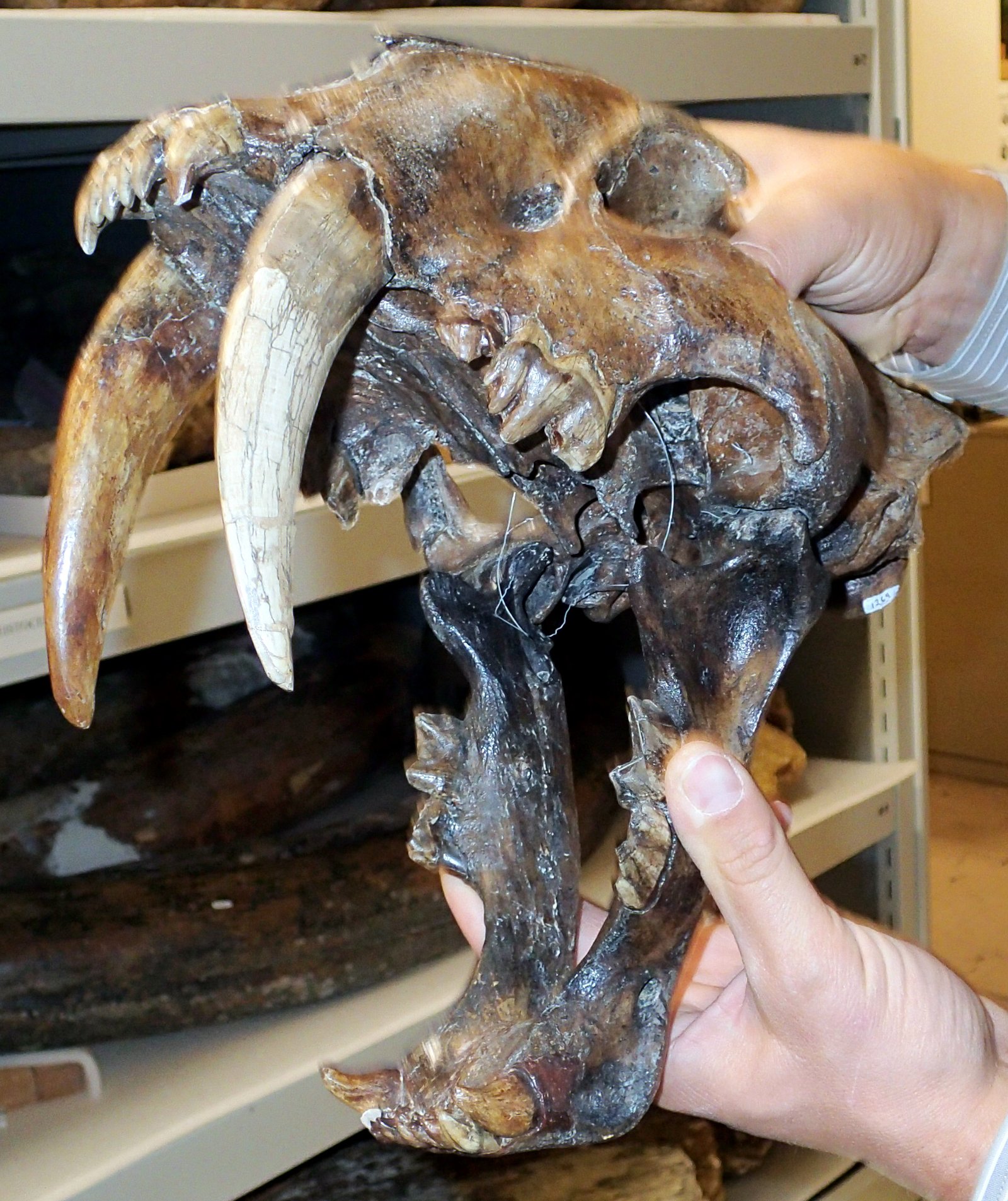
Those saber-like canines get all the attention, and for good reason. They’re impossibly long and razor-sharp, designed not just for hunting, but for a very specific style of killing. Unlike modern cats, the saber-tooth’s teeth were fragile, built for a quick, precise attack rather than a long struggle. Each tooth is etched with the marks of its owner’s life—scratches from prey, chips from fierce battles, and a glossy sheen that comes only from years of use. Scientists can read these marks like a diary, piecing together how this cat lived and hunted. It’s a haunting reminder that every tooth, like every cat, has its own story—written not in words, but in the wear and tear of a life wild and free.
A Spine Built for Power
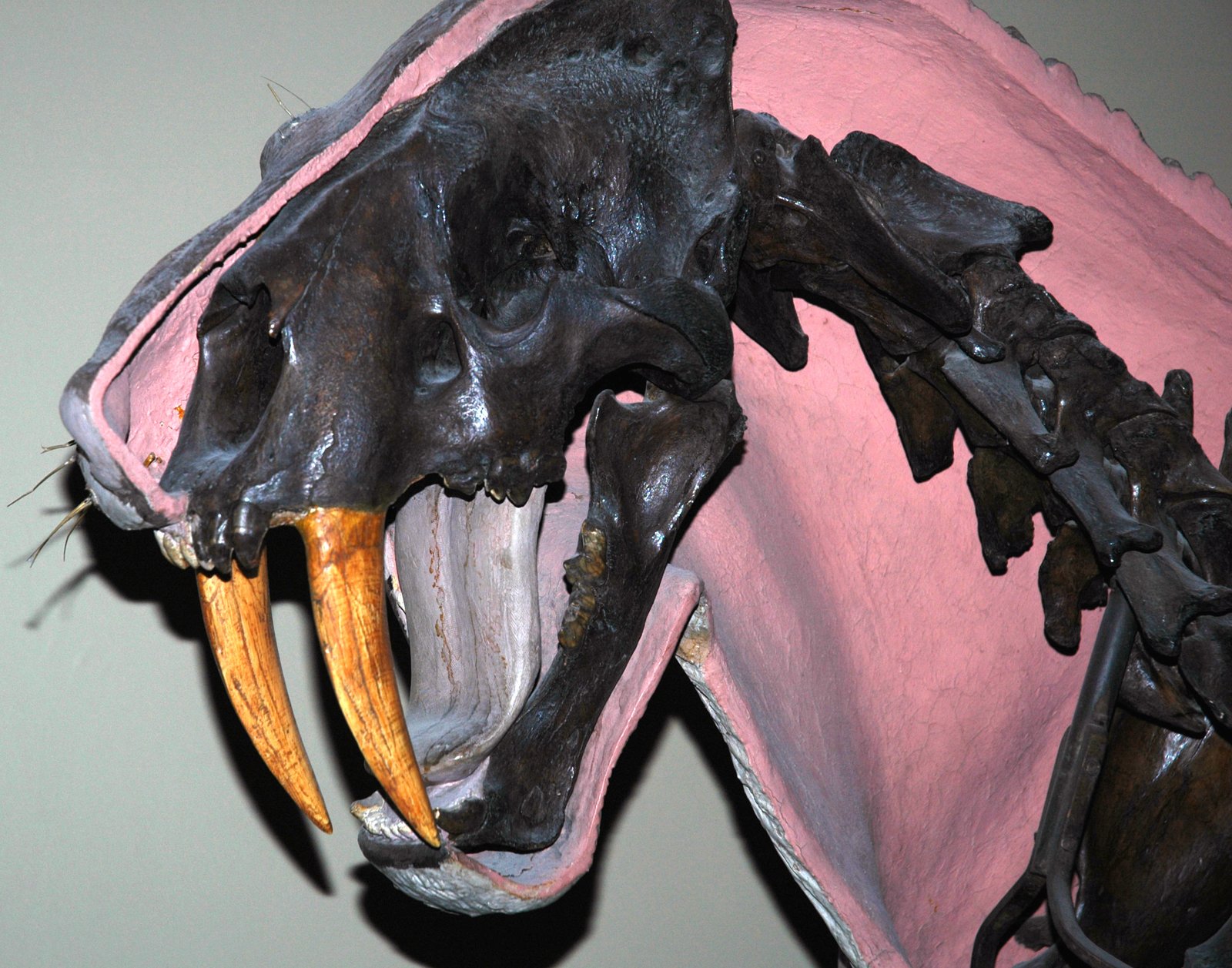
The saber-tooth’s backbone is a masterpiece of engineering—each vertebrae shaped for strength and flexibility. Unlike the limber, stretchy spines of our house cats, this ancient cat’s back was a bit stiffer, built to anchor massive muscles. When you run your hands along the fossilized spine, you can almost feel the tension and power that once rippled beneath the skin. This was a cat that could leap, twist, and wrestle prey many times its size. Yet there’s also a certain vulnerability here—a reminder that even the mightiest creatures depend on fragile bones. Every curve and notch in the spine tells a story of movement, grace, and survival in a world that demanded everything from its wildest inhabitants.
Paws Made to Grasp
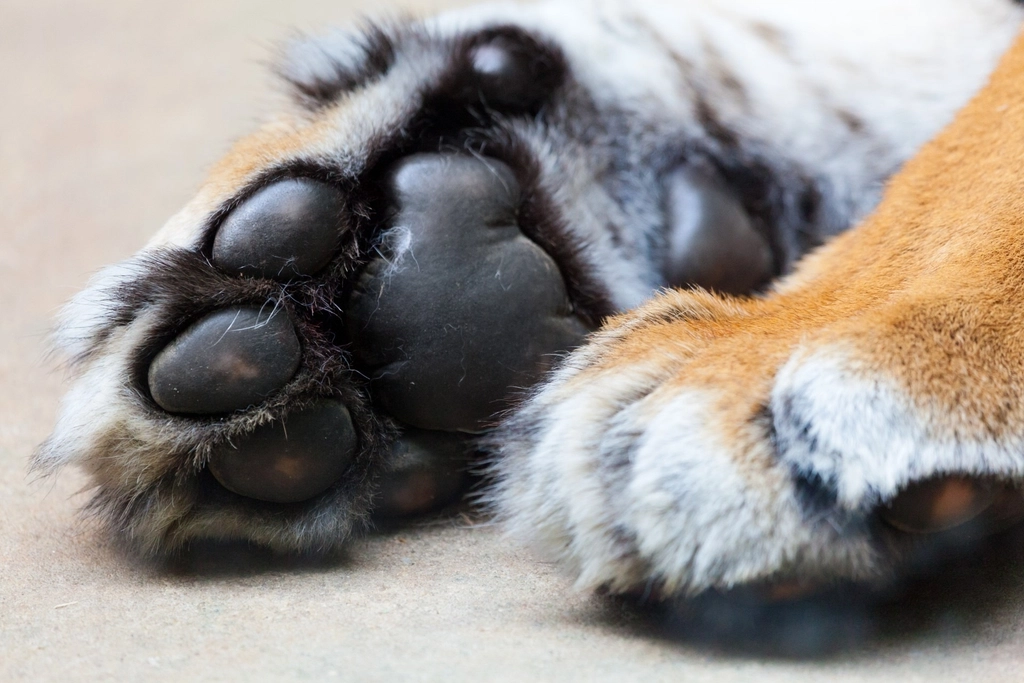
Imagine the front paws of the saber-tooth, each as wide as a dinner plate and tipped with claws like curved daggers. These paws were more than just weapons—they were tools of survival. Built for gripping, holding, and pinning down prey, their structure hints at a life spent in pursuit and struggle. Underneath the fossil’s ancient surface, you can sense the relentless drive, the never-ending need to eat, survive, and thrive. But there’s something familiar here too. Look at your own cat’s paws as they knead your lap or bat at a toy, and you’ll see the same basic blueprint. The saber-tooth was both wild predator and distant cousin—a reminder that the story of cats is one of both ferocity and gentleness.
Muscles Written in Bone
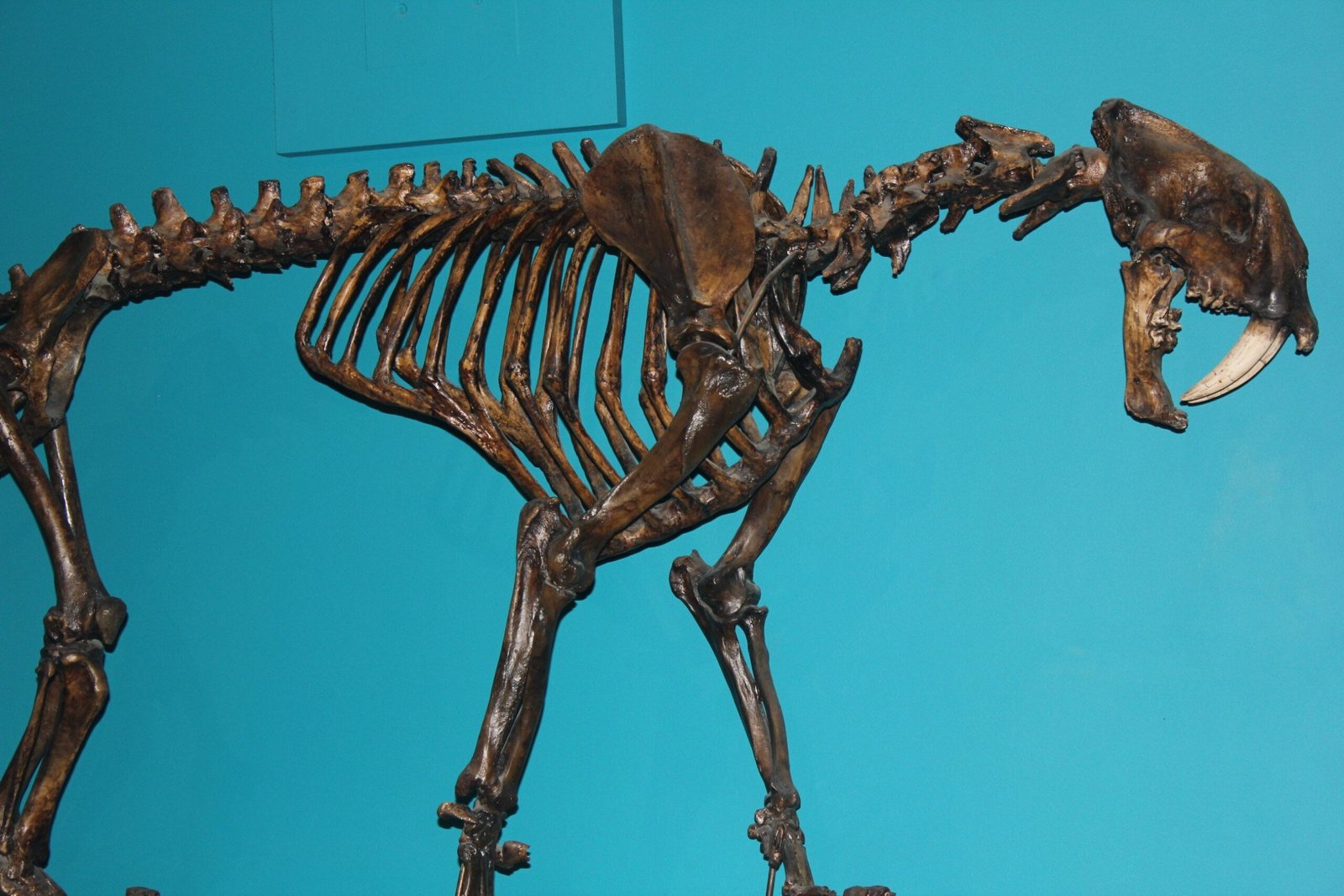
Even though muscles rarely fossilize, the saber-tooth’s bones still tell us a lot about how it moved. Deep grooves and ridges mark the places where powerful muscles once anchored, especially along the jaw, shoulders, and hips. By studying these marks, scientists can reconstruct the incredible strength and athleticism of this ancient cat. It’s like seeing the ghost of a body long vanished, a whisper of muscle and fur that once brought the skeleton to life. These clues let us imagine the saber-tooth in motion—stalking, leaping, pouncing with silent confidence. There’s something thrilling about piecing together a life from such small hints, as if the cat is still there, just out of sight, waiting to be discovered again.
Living Alongside Giants
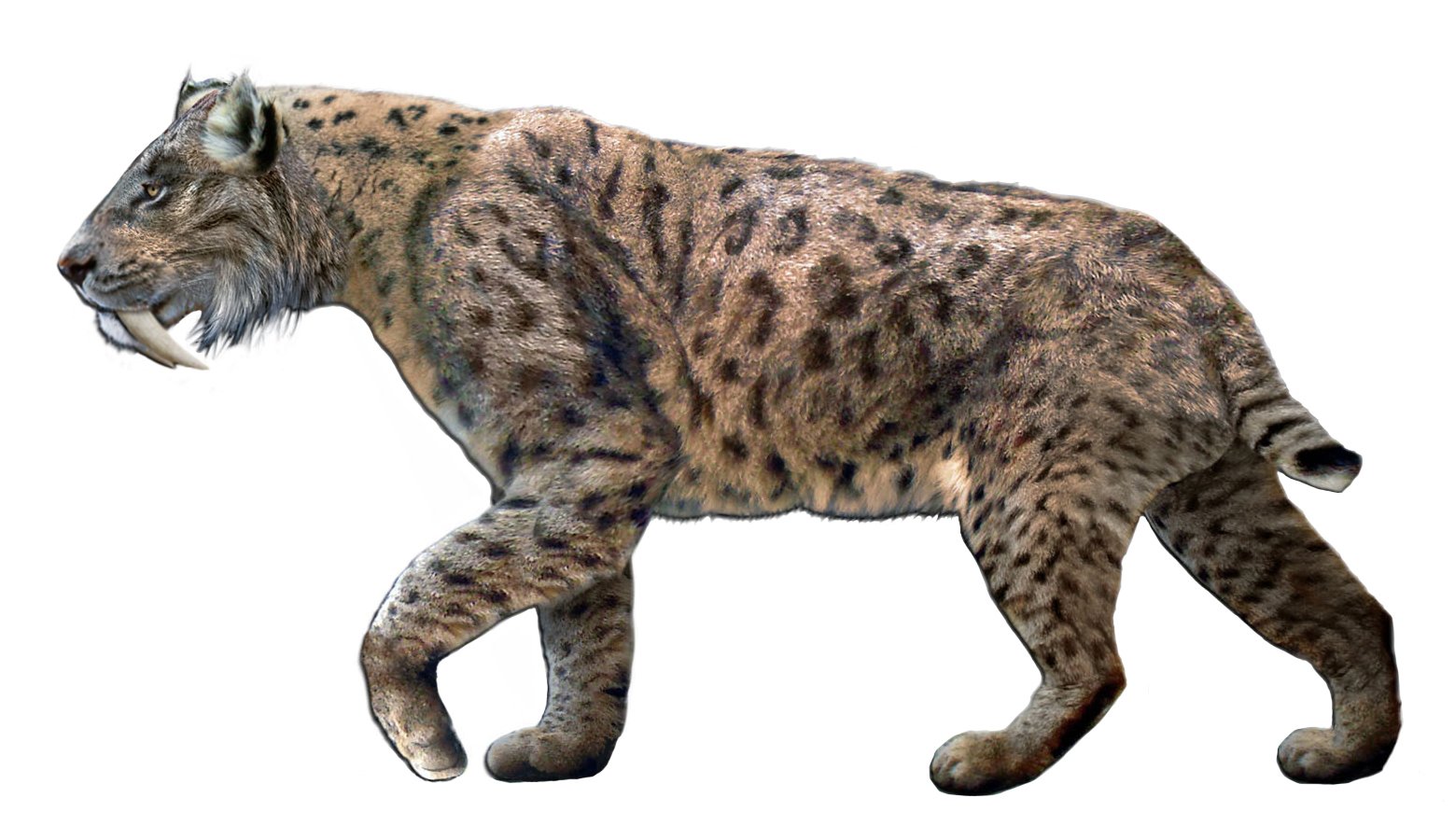
In its day, the saber-tooth shared its world with mammoths, giant sloths, and towering bison. Its habitat was a land of giants, a place where every day was a struggle for dominance and survival. The completeness of this skeleton gives us a window into that vanished world—a world both brutal and beautiful. Imagine the saber-tooth weaving through ancient forests, stalking prey beneath the watchful eyes of animals now lost to time. There’s a sense of awe in realizing how these great cats fit into the puzzle of their ecosystem, both predator and prey. Their story is a reminder of how interconnected all life is, and how even the most powerful creatures depend on the world around them.
The Mystery of Extinction
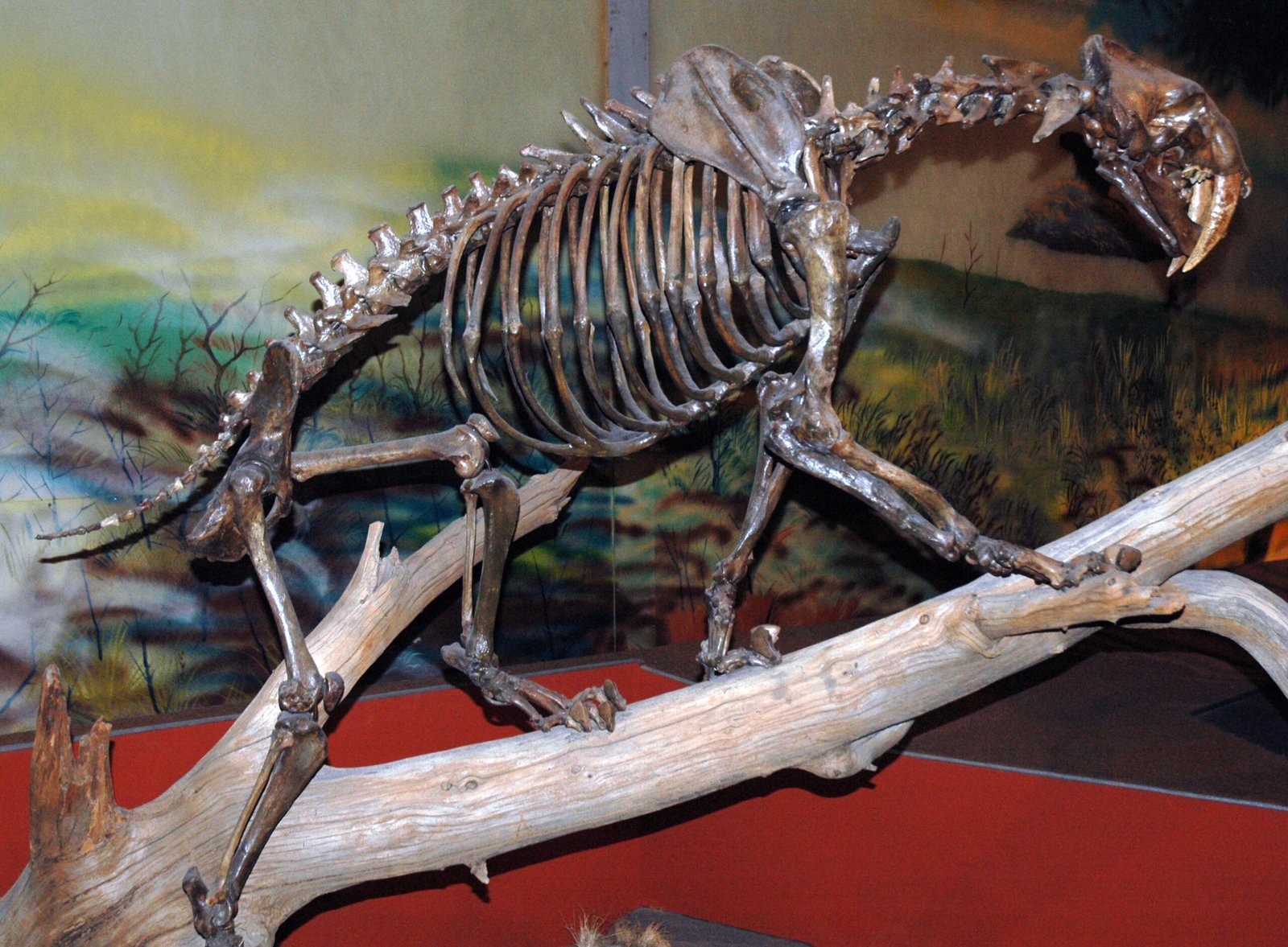
Why did the saber-tooth disappear? It’s a question that haunts paleontologists and cat lovers alike. Some say climate change shifted their world too quickly, others blame competition with early humans, or the loss of their giant prey. The truth is likely a mix of many factors, each one a thread in a tapestry of loss. The completeness of this skeleton lets us ask new questions, compare ancient injuries, and search for signs of disease or struggle. But some mysteries may never be solved, and perhaps that’s part of the magic. The saber-tooth’s extinction is a stark reminder that even the mightiest are vulnerable—a lesson echoed in the struggles of today’s wild cats.
Fur and Color—A Guessing Game
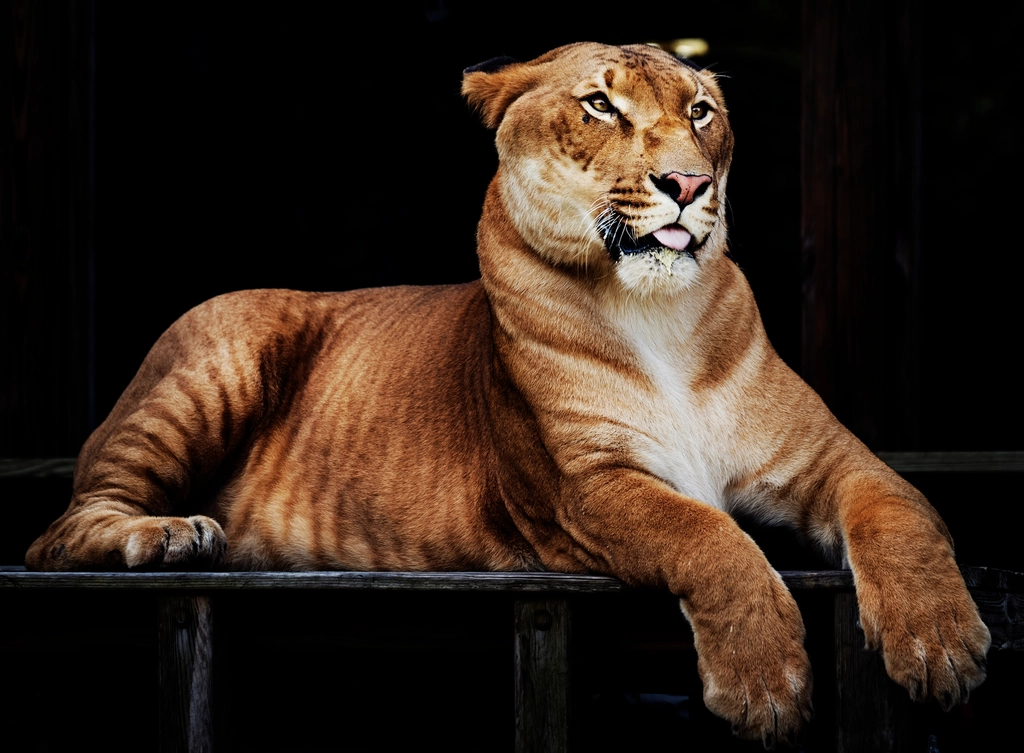
No one knows exactly what color the saber-tooth’s fur was, but scientists can make educated guesses. Based on its habitat and modern relatives, it might have sported tawny, spotted, or striped coats, blending into the golden grasses or shadowy forests of its world. The idea of this enormous cat, camouflaged and watching from the undergrowth, is both thrilling and a little unnerving. We see echoes of this in today’s leopards and tigers, whose patterns help them hunt and hide. The mystery of the saber-tooth’s fur is a reminder of how much we still don’t know, and how our imagination fills in the spaces between bone and life.
Hearing Every Whisper

Though we can’t see its ears, the saber-tooth’s skull suggests it had keen hearing. The structure of the ear bones hints at an animal tuned in to the smallest rustle or distant footstep. This sensitivity would have been essential for both hunting and avoiding danger in a world full of threats. Imagine the saber-tooth crouched low, every muscle tense, as it listens for the heartbeat of its next meal. It’s a skill shared with today’s cats, whose ears swivel and catch sounds that we can barely notice. The saber-tooth’s gift of hearing is a reminder that survival often comes down to what we notice—and what we don’t.
Scent of Survival

Cats are famous for their sense of smell, and the saber-tooth was likely no exception. The structure of its nasal passages suggests a powerful ability to pick up scents on the wind—prey, rivals, friends, or foes. This sense would have been vital in the dense, dangerous world it called home. Scent tells a story that sight and sound can’t, painting a map of the world in invisible trails. Today’s cats still rely on their noses, whether tracking a mouse or greeting a fellow feline. In every sniff and twitch of the whiskers, there’s a little bit of ancient wisdom, a connection that stretches back to the saber-tooth’s wild age.
The Heart of a Predator
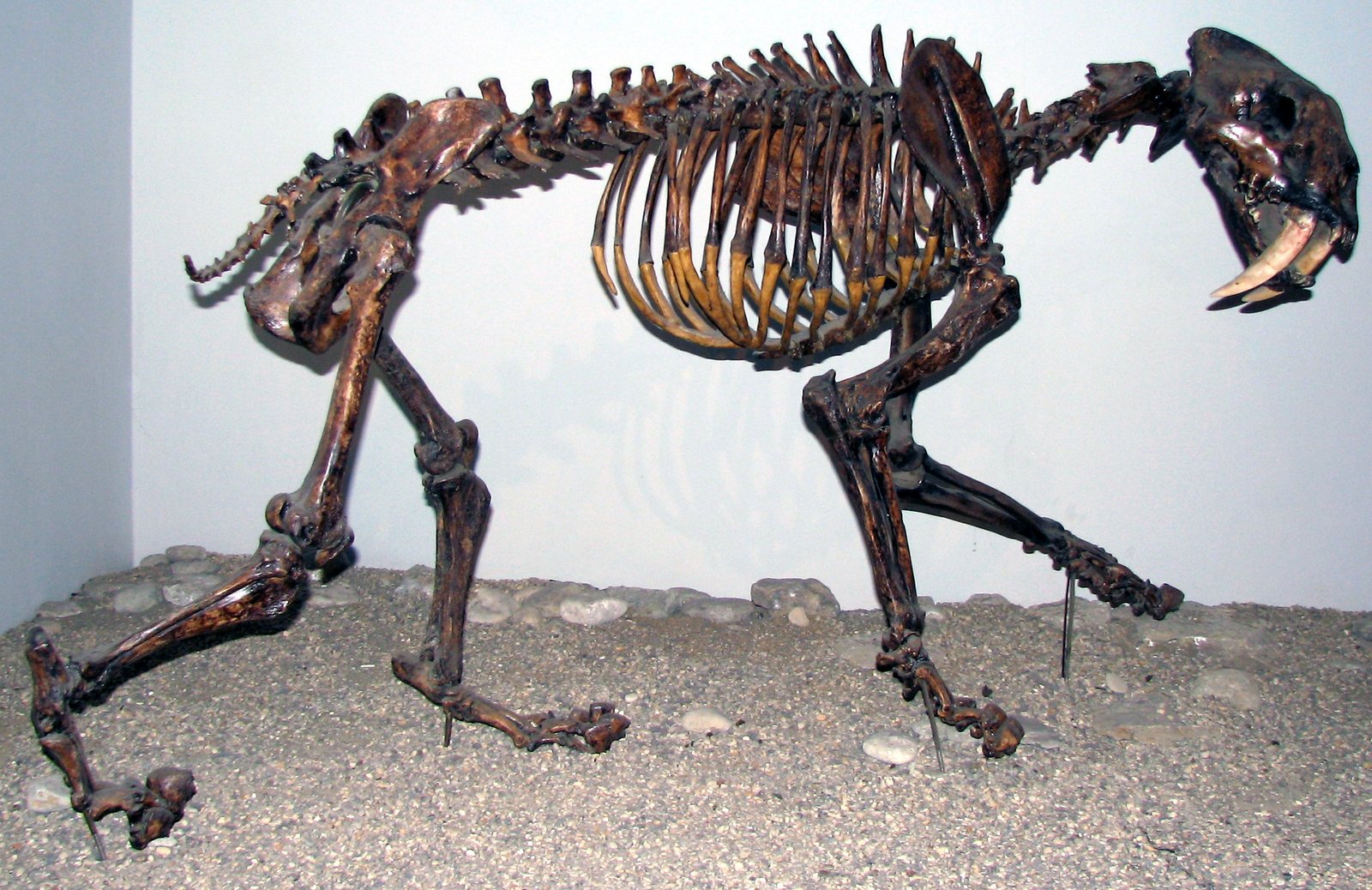
Every bone in the saber-tooth’s body speaks of a life built around the hunt. From its massive jaws to its powerful limbs, this was a cat designed for action. Yet, like all predators, it needed more than just strength—it needed cunning, patience, and instinct. There’s a thrill in imagining the saber-tooth waiting in the shadows, muscles coiled, senses alert, ready to spring. It’s a scene that plays out every day in the wild places of our world, as lions, tigers, and leopards continue the age-old dance of hunter and hunted. The saber-tooth’s skeleton is a testament to the enduring spirit of the feline—a spirit that still prowls in every cat’s heart.
Family Bonds and Social Life

While much about the saber-tooth’s social life remains a mystery, fossil evidence hints that they may have lived in groups, much like today’s lions. Injuries that healed over time suggest that wounded cats were cared for by others—a touchingly familiar behavior for anyone who’s watched their own cats groom and comfort each other. The idea of saber-tooths sharing kills, raising young, and defending territory together adds a rich layer to their story. It’s a reminder that even the fiercest predators depend on connection, trust, and family. The echoes of these bonds linger in the gentle head-butts and purrs of our own domestic felines.
A Cub’s First Steps

Imagine a tiny saber-tooth cub, its fangs just starting to peek through, learning to walk on wobbly legs. These early moments were filled with danger and discovery, as cubs learned to hunt, play, and find their place in the world. Fossilized baby bones are rare, but when found, they reveal the same universal truths—growth, struggle, and the fierce protection of mothers. Watching today’s kittens pounce and tumble, it’s easy to see the lineage stretching back millennia. The story of the saber-tooth cub is a story of hope and resilience, a reminder that every great predator starts out small and uncertain.
Weathering the Ice Age
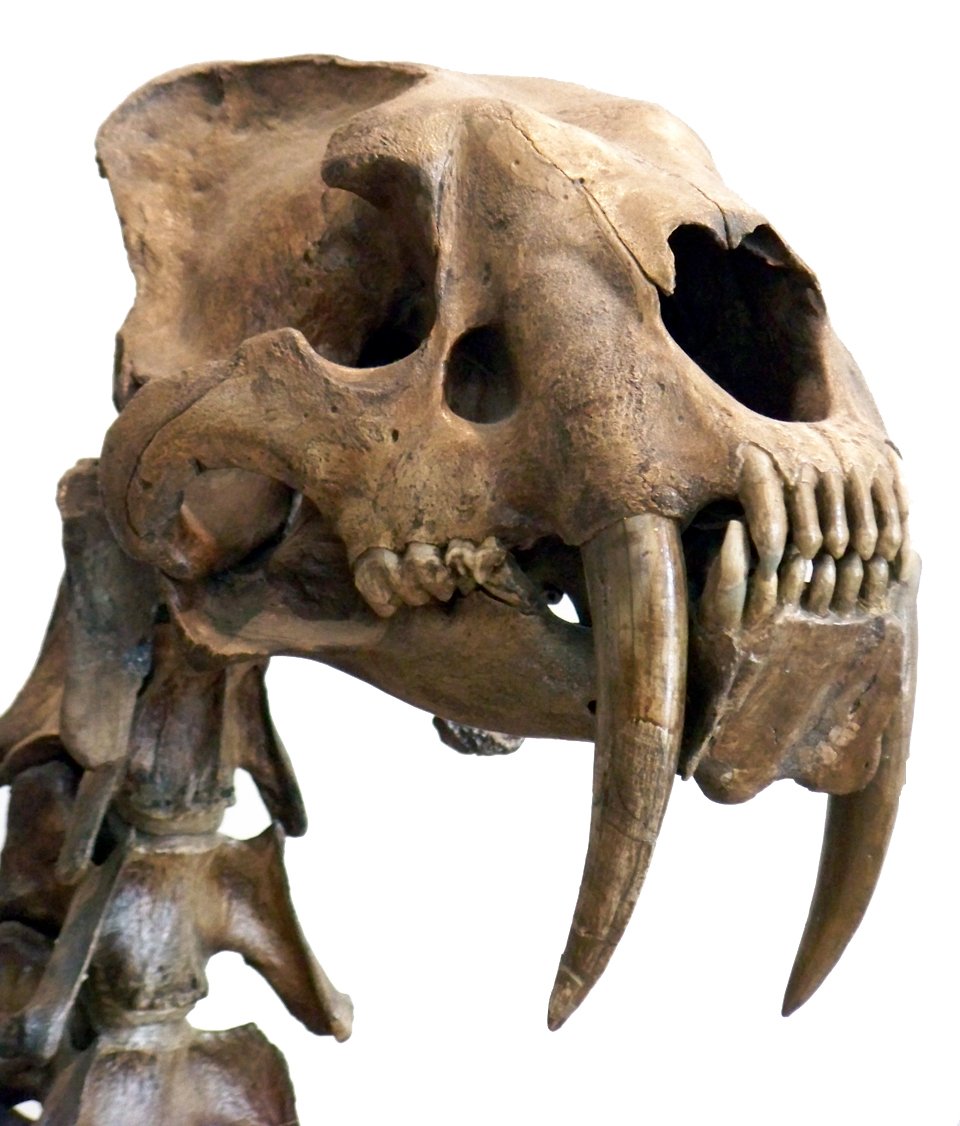
The saber-tooth didn’t just battle prey—it battled the elements. Living through the last Ice Age meant enduring freezing temperatures, shifting landscapes, and unpredictable seasons. The thickness of its bones suggests a creature built for strength and endurance, able to weather harsh winters and sudden storms. Survival depended on adaptability, finding food and shelter in a world that could change in an instant. This resilience echoes in the wild cats of today, who face shrinking habitats and a changing climate. The saber-tooth’s story is a lesson in survival, a testament to the power of adaptation and the will to live.
What Bones Reveal About Health
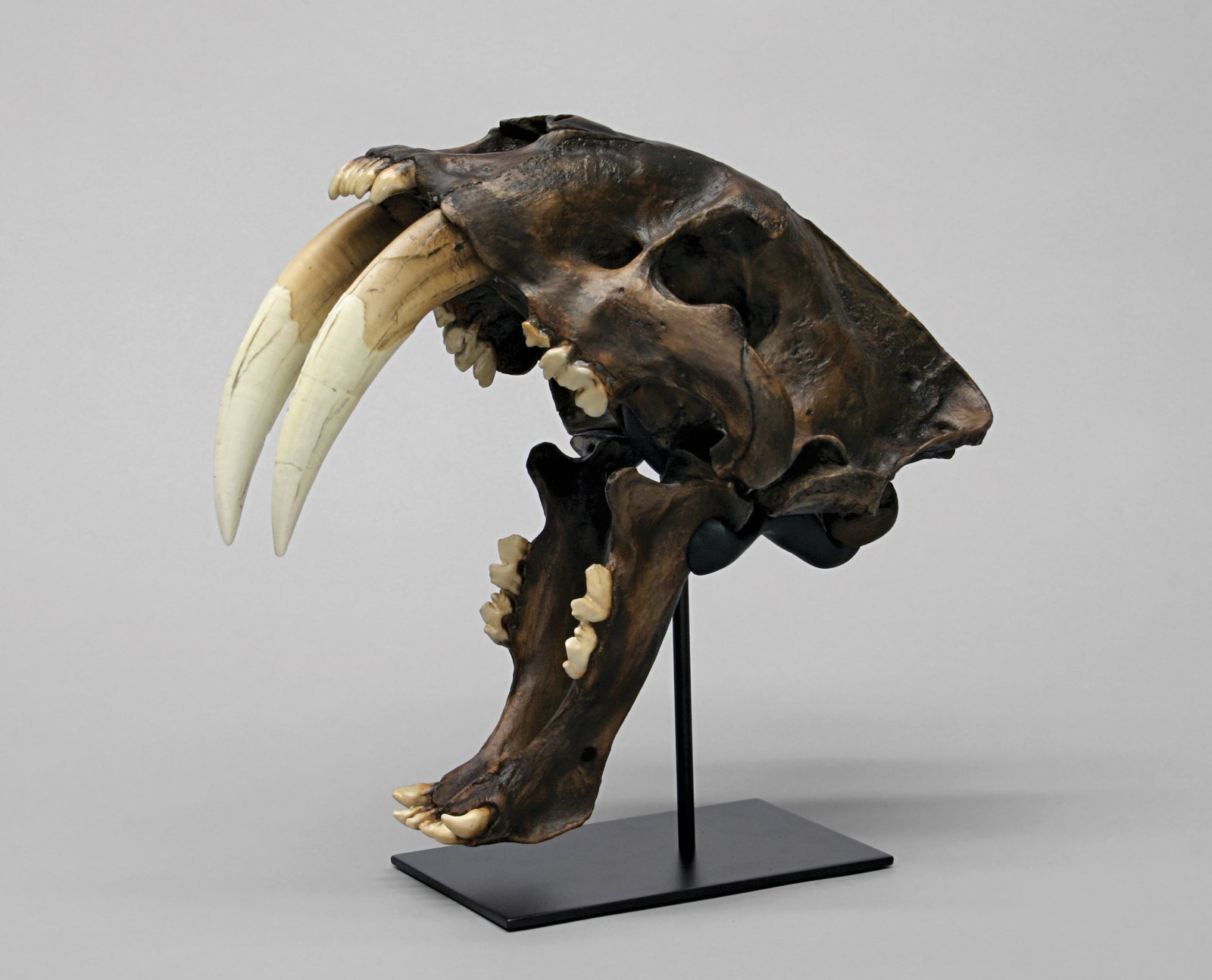
Every nick and scar on the saber-tooth’s bones tells a story of survival. Healed fractures, worn joints, and signs of disease reveal the challenges these cats faced. Some injuries speak of narrow escapes from predators or prey; others hint at the toll of old age. Studying these details helps scientists understand not just how the saber-tooth lived, but how it coped with pain, injury, and illness. It’s a reminder that every creature, no matter how powerful, faces vulnerability. There’s a quiet dignity in these bones, a testament to the resilience and courage of wild animals everywhere.
The Role of Saber-Tooths in Myth
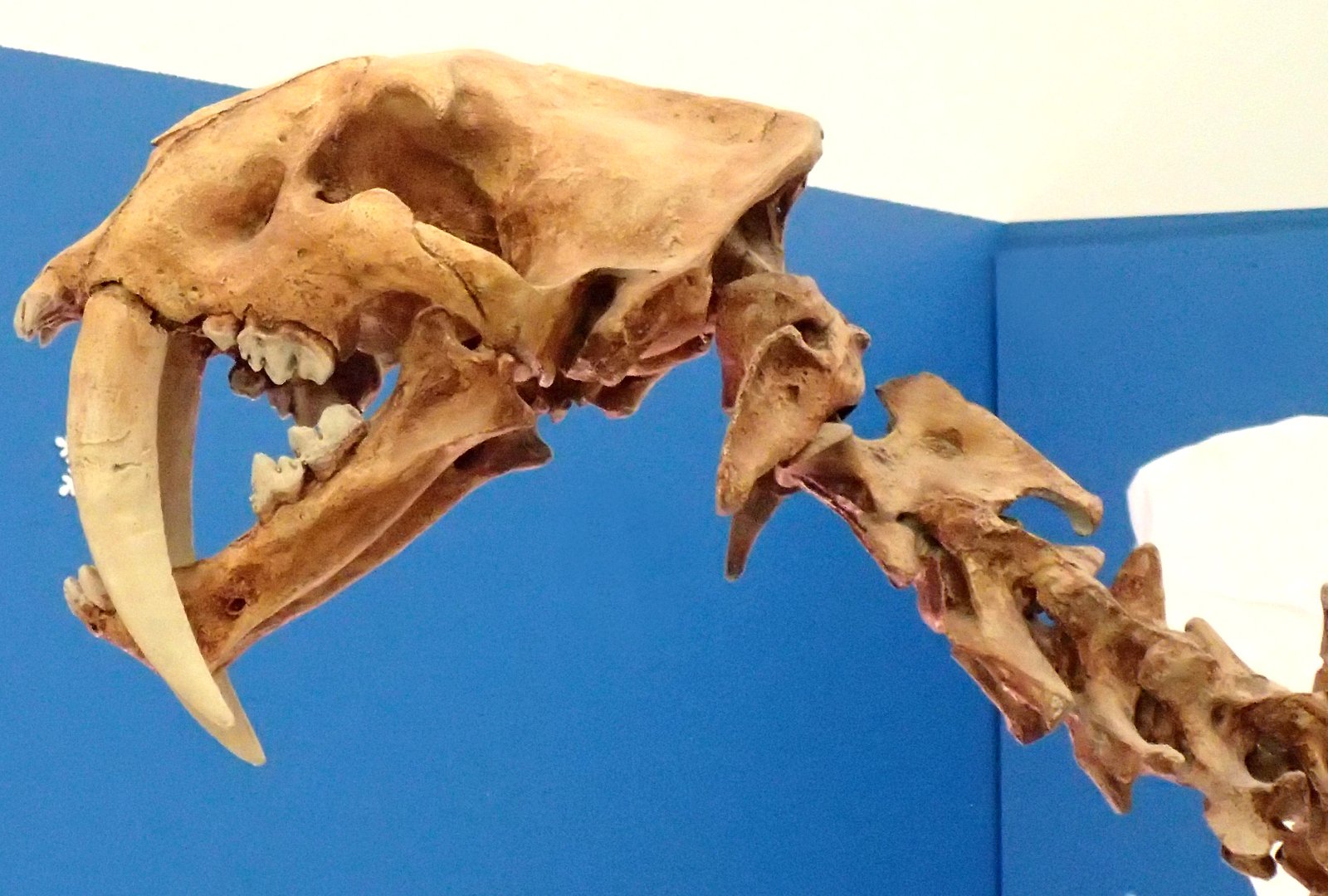
Long after their extinction, saber-tooths have haunted our imaginations. Cave paintings, ancient carvings, and legends from around the world feature massive, fanged cats stalking through the darkness. These stories blend awe and fear, celebrating the power and mystery of the feline form. The discovery of a complete skeleton brings these myths to life, grounding fantasy in reality. It’s easy to see why people once believed in monsters—when the bones are this impressive, the line between legend and truth blurs. Saber-tooths remind us that the boundary between the real and the imagined is thinner than we think.
Echoes in Modern Cats

Look at your cat stretched out in the sun, and you might catch a glimpse of the saber-tooth’s ancient grace. The way they stalk a toy, the silent confidence of their movements, the flash of teeth in a yawn—all are echoes of a wild heritage. Scientists see these connections in bone and behavior, tracing the lineage from ancient predators to our beloved pets. It’s a comforting thought, knowing that the story of the saber-tooth isn’t over—it lives on in every purr, leap, and playful pounce. The bond between humans and cats is a bridge across time, linking past and present in every shared moment.
Conservation Lessons from the Past
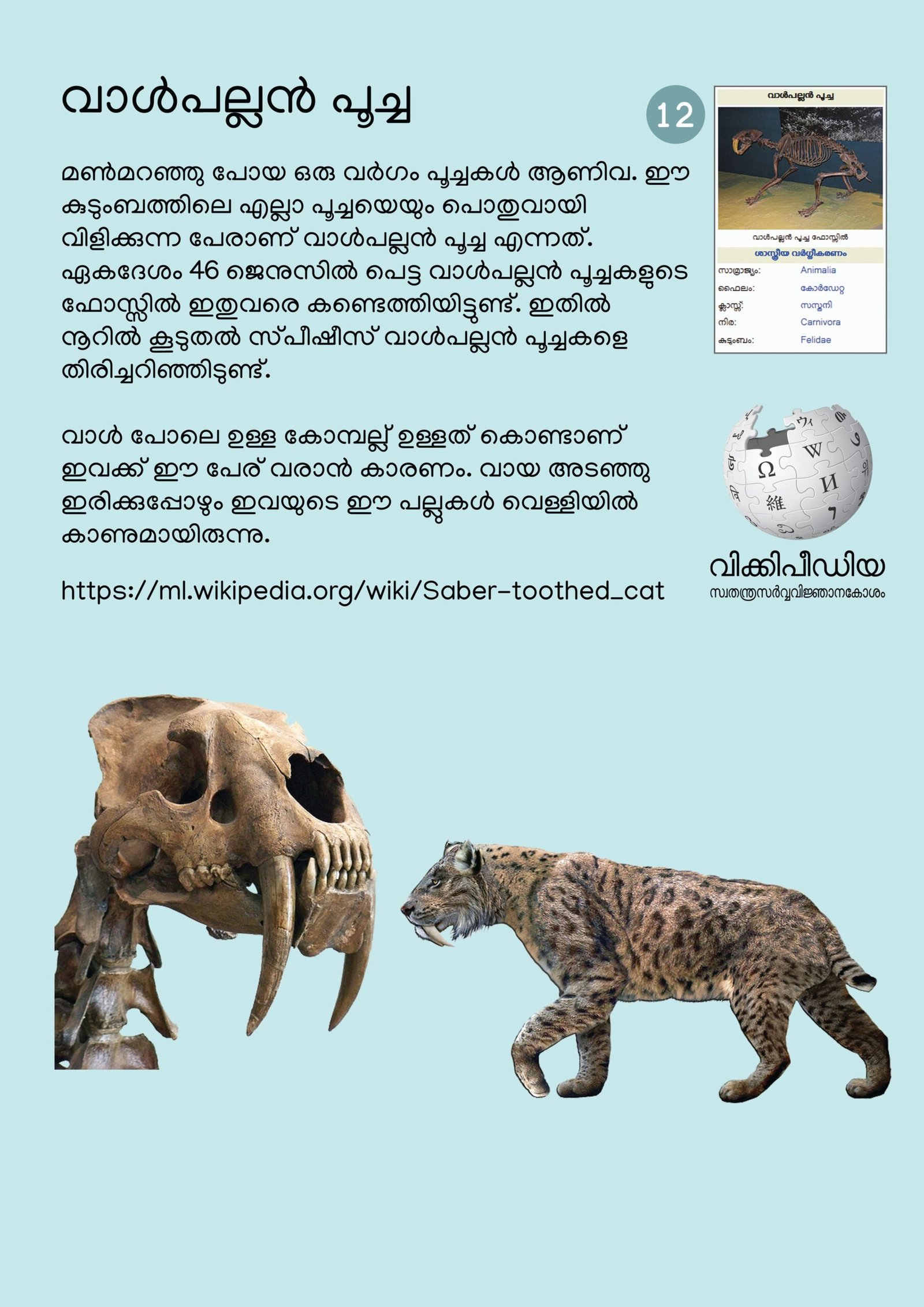
The saber-tooth’s extinction is a sobering reminder of how fragile life can be. It’s easy to marvel at the bones, but their silence speaks volumes about the dangers facing wild cats today. Habitat loss, climate change, and human encroachment threaten countless species, from tigers to snow leopards. By studying the past, we gain insight into the challenges of the present—and inspiration for protecting the future. The story of the saber-tooth is a call to action, urging us to cherish and defend the wild wonders that still share our world. Every cat, wild or tame, deserves a chance to thrive.
The Joy of Discovery
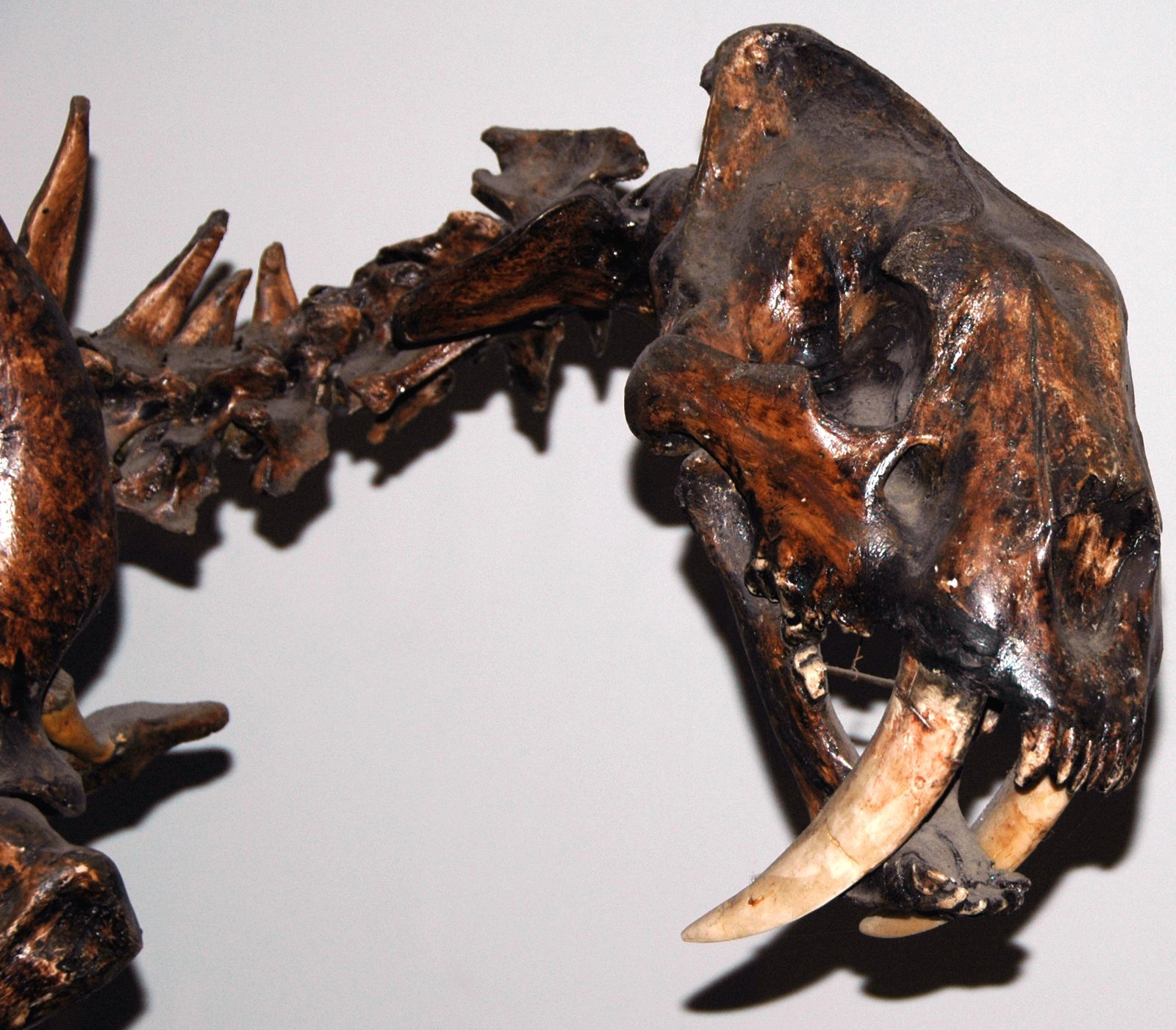
There’s nothing quite like the thrill of unearthing a fossil, brushing away centuries of dirt to reveal a piece of history. The discovery of the most complete saber-tooth skeleton is a celebration—not just for scientists, but for everyone who loves cats. It’s a moment of wonder, a reminder that the world is full of secrets waiting to be uncovered. Each new find adds a chapter to the story, deepening our connection to the wild and the unknown. In the quiet of a dig site, surrounded by ancient bones, you can almost hear the echo of paws on soft earth, a whisper from a time long gone.
Inspiring Future Generations
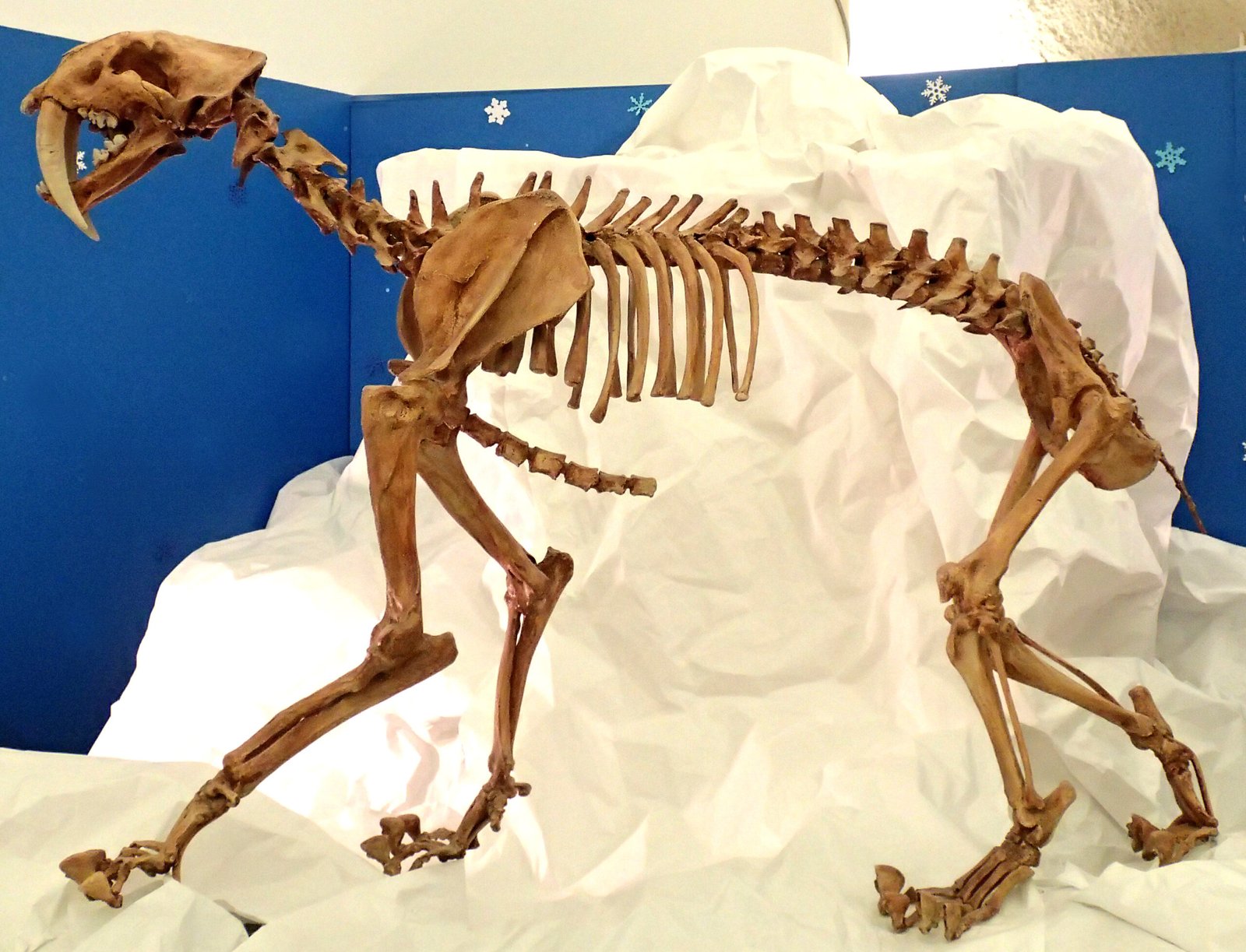
The story of this saber-tooth skeleton isn’t just for paleontologists—it’s for dreamers, artists, and every kid who’s ever drawn a tiger or played with a kitten. Holding a piece of the past sparks curiosity and imagination, inspiring new questions and adventures. Museums bring these bones to life, inviting visitors to step into the world of giants and hunters. Each fossil is a time capsule, carrying the hopes and dreams of those who find it. By sharing these stories, we pass on the wonder of discovery, ensuring that the magic of the saber-tooth lives on in every new generation.
Conclusion

The tale of the saber-tooth, from skull to skeleton, is more than a story of ancient bones—it’s a celebration of the wonder and resilience that defines all cats. Each fossilized piece, every tooth and claw, draws a line from the distant past to the present, reminding us of the beauty, mystery, and wildness that cats bring into our world. As we marvel at the most complete saber-tooth ever uncovered, we see not just a relic, but a vibrant legacy—a reminder to cherish the felines that share our lives and to protect the wild spirits that still roam. What other secrets might tomorrow’s discoveries hold?

Suhail Ahmed is a passionate digital professional and nature enthusiast with over 8 years of experience in content strategy, SEO, web development, and digital operations. Alongside his freelance journey, Suhail actively contributes to nature and wildlife platforms like Feline Fam, where he channels his curiosity for the Feline into engaging, educational storytelling.
With a strong background in managing digital ecosystems — from ecommerce stores and WordPress websites to social media and automation — Suhail merges technical precision with creative insight. His content reflects a rare balance: SEO-friendly yet deeply human, data-informed yet emotionally resonant.
Driven by a love for discovery and storytelling, Suhail believes in using digital platforms to amplify causes that matter — especially those protecting Earth’s biodiversity and inspiring sustainable living. Whether he’s managing online projects or crafting wildlife content, his goal remains the same: to inform, inspire, and leave a positive digital footprint.






